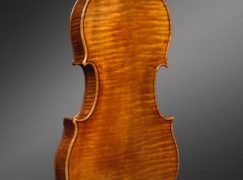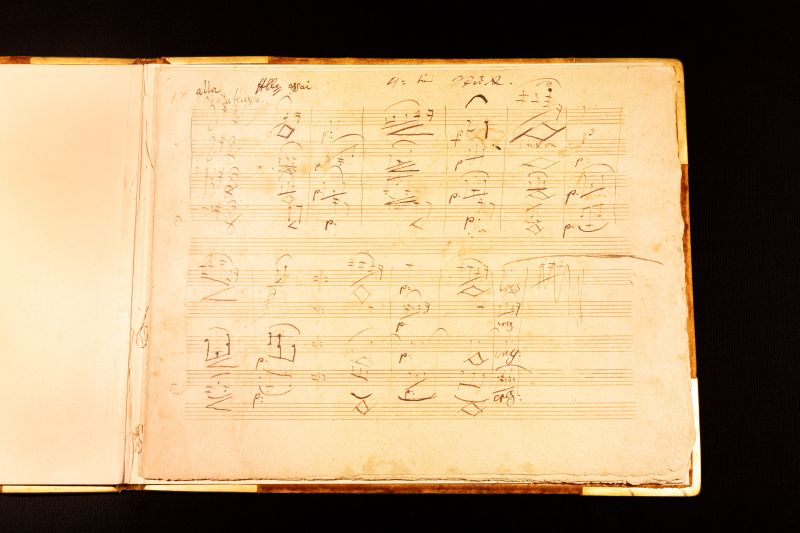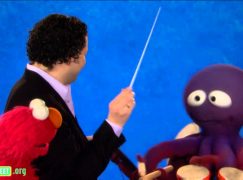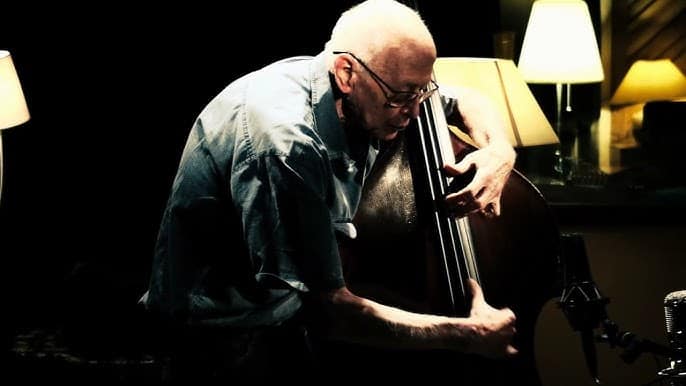Are Strad tests rigged?
mainAn academic survey reports that, in rigorous blind tests, most violinists prefer a new instrument to a Strad.
Does this mean past tests have been tilted in favour of the Strads?
Here’s the summary:
Old Italian violins are widely believed to have playing qualities unobtainable in new violins, including the ability to project their sound more effectively in a hall. Because Old Italian instruments are now priced beyond the reach of the vast majority of players, it seems important to test the fundamental assumption of their tonal superiority. A recent study found that, under blind conditions, violin soloists generally prefer new violins and are unable to distinguish between new and old at better than chance levels. This paper extends the results to listeners in a hall. We find that they generally prefer new violins over Stradivaris, consider them better-projecting, and are no better than players at telling new and old apart.
Now read on here.






We shouldn’t be surprised after all the previous tests where the Strads failed to win but objections will be raised none-the-less.
A college teacher of mine, a violinist, said that based on her opportunities to play them, she felt Guarneri were superior to Stradivari, which seem to be the only representatives of “old Italian violins” in the study.
So, don’t despair, there is that to keep the fuss going. Perhaps the Stradivari are aging out and the Guarneri are still ascending to their peak.
…it’s not really news. Strads are investments primarily, these days.
Also violin making has undergone some major improvements in recent years, not least to new analysis methods for older instruments.
There are some outstanding Strads. There are mediocre ones. And a few crappy ones as well.
Same for the instrument family created by Guarneri.
Family is an apt term actually. Think about having many children. They all share your unique genes and some similarities, but they all are quite different as well.
Last not least. Imagination does wonders. Particularly when it comes to listening.
I know violinists who took part in such tests. And said they played better (or more precisely they believed they played better) when they knew the instrument was a Strad. When they didn’t know which instrument it was, that effect didn’t occur…
“Also violin making has undergone some major improvements in recent years, not least to new analysis methods for older instruments.”
That was my thought. If new manufacturing processes have specifically set out to emulate the best qualities of the old instruments, it is still a testament to their quality.
But then my instrument is the viola, so what do I know?
I’ve read the argument that Strads or Guarneris require a longer learning curve, but in the end yield higher dividends. At a first try, so the argument goes, players may draw a better sound from a modern instrument. But once they get to know a Cremona violin better, they’ll be better off with it than with a modern one.
What do string players in this blog think of that? I am not a string player, so I can’t have an opinion.
I’d echo some of the preceding comments – many instruments can take time to get the best out of.
One further observation for many studies like this is that they rarely use a sample of what I would personally consider to be the finest top violinists – the people we might imagine would have the facility to draw the very best out of a given instrument, and the skill and understanding to know how and when to apply that to music. In this study, for example, the paper cites using “seven internationally renowned soloists”, but when one looks at the names of the players, I confess that I barely recognise them. Of course, this doesn’t mean that they are not good, but it does lead to wondering what the results might be if the players were the likes of Vengerov, Kavakos, Jansen, Ehnes and so on.
My dear Friends! if I may add anything:)
My first Strad I ever touched, I was 10 years old. It was 1984 and I was preparing myself for the Junior Wieniawski Competition. My teacher at that time professor Bron, helped me to get the Stradivari from the Soviet Union’s State rare instrument collection. It was Strad’s half size unique instrument. When I took this instrument for the first time, I thought that like with a wave of magic stick, I would start making miraculous sounds. Next minute, I could not believe my ears when the violin sounded so terrible to compare to my modern instrument that I “mastered” playing at that time. I compared the two instruments playing the same piece over and over again to my father, seeking his approval that the whole Stradivari thing is a total myth!!!
My dad was at that time working as an oboist of the Novosibirsk Philharmonic Orchestra and at the same time he was also a professional piano tuner. I shared with him my first shocking Strad experience. He smiled and said to me that I should not be disappointed. “Just learn how to play it, close your eyes, open your ears and listen to the overtones. Find that sound, find your own voice in Music, this instrument will teach you everything you need to know”
From that moment on my life in Music began…
Today, I am lucky to say that I played perhaps over 40 Strad’s and other precious instruments like Guarneri Del Jesu.
All Stradivari’s violins I have had fortune to touch, all his instruments with almost no exception are also a treasure. There is however quite a bit of work involved. First you need a player that is willing to be flexible to go as far as to change his or her own violin technic for the violin that he or she is playing. Then, you need a superb violin maker to perform a fine tuning – an adjustment of the instrument for a player’s taste. In other words, it’s a partnership, like a trio: violin, violinist and a violinmaker. But then, the most interesting happens when you go to the concert hall! Not even during rehearsal, the ultimate test of the instrument and your ability to play it, is awaiting you together with thousands of spectators when you enter the concert stage. Only then, real work begins.
The first time I played my own “Kreutzer” Strad was playing in Chicago with Rostropovich conducting me in Schostakovitch’s violin concerto.
After the concert my beloved Slava asked me: Maxim, what instrument are you playing?
I proudly declared: Strad, 1727, used to be owned by the legendary Kreutzer!
With no hesitation Rostropovich threw at me: Change it!!
It took me, and two of my violin makers Florian Leonhard and Nahum Tuch about half a year to “lift this unique violin up” to the absolute Everest.
The process was a truly unbelievable rollercoaster that is hard to describe!
When you play phenomenal Guarneri “Del Gesu ” violins, you can play it as you wish. The instrument will realize all your dreams and expectations about the sound, providing you are a skillful player.
All those magic violins made by Antonio Stradivari I got to know, made me into a more flexible player I am today. Flexible, because when you hold Strad, you do not play it – it teaches you how to sing it, with his violins you are able to discover the magical palette of colors and more over, every day it’s a bit of another instrument. It is alive, truly mystical, like a person. Strad is my daily life changing experience!
I hope it helps:) For more, do come to my concerts or get my new cd’s. They will soon be available. I will keep you posted. Best wishes to All Music lovers at Slipped Disc and not only:) Yours with love, Maxim Vengerov
Thank you for your post, Maxim
Great informative read ‘from the lions mouth’. Thank you, Mr. Vengerov!
What I personally read most out of your lines, is that what comes always first is the player, who can make an instrument sound its best by adapting to it with exceptional skill.
And it then certainly helps the enormous effort, if the mental image for the player is to work for and with an instrument of exceptional and inspiring history and name.
No modern instrument can ever give that uplifting feeling of holding musical history in your hands.
Thanks for your comment Maxim – as always your words are like poetry describing your experiences and the work that always needs to be done in playing truly great violin. I look forward to hearing your partnership with the Kreutzer again soon. Best wishes, Janexxx
What if all that extra time and extra determination and extra luthiers and extra getting-to-know-it were also put into a modern instrument?
The presumption seems to be that the modern instrument has no more to offer than when it was first pulled off the shelf, but how do you know that is true.
It’s unlikely anyone will put that time into a modern instrument to find out because they don’t have a $20 million commitment to it.
This is catnip for conspiracy theorists who enjoy music, but don’t have real world experience listening to great and modern violins side by side on their own, else they would know better. The details of this paper are not available without membership, but if you read into the 2012 paper linked under Supporting Information what you discover is not that Strads are not prefered but that the entire selection process is essentially random and people in their survey are not consistent when picking violins. (Also that one Strad that nobody liked skewed the results towards the moderns) Look, we musicians are not gluttons for spending money we don’t have nor are we particularly idiotic (by and large…). There is a real difference and we hear it regularly in screened auditions for the orchestra. We can almost without fail tell when someone is playing on a great instrument and when the sceen comes down, we are almost always proven correct. Not all old instruments are good- even some great makers have poor, examples and there are excellent modern violins and cellos. But the idea that they sound the same is just silly to those of us who live this every day and do blind tests regularly when trying instruments.We aren’t investors, we are poor musicians. Don’t you think we would choose the cheaper option if we could get away with it? Don’t you think it ever occured to us to try this, long before this study? Imagine someone told you there was no difference between pink and blue, and proved it by publishing a paper where some people couldn’t distinguish them (I can’t). Does that mean that pink is a hoax? Similar studies, BTW, ‘prove’ that cheap and expenisve wines are indistinguishable. Does this mean they are? Soon perhaps, they will prove that people can’t tell the difference between works of CPE Bach and Mozart, and therefore the genius of Mozart is also a hoax. The fact that a paper peer reviewed and published does not make it a fact, and with such a limited sample size this is almost meaningless.. Musicians do blind tests all the time throughout our lives. There is nothing benefiting most of us from propogating a myth of great old instruments. We can’t even afford them! Modern insturments are fine and it is likely true that many people can’t tell the difference. That doesn’t mean it doesn’t exist…
Musicians are probably not ‘idiots’ in their majority, but they certainly are very irrational in their majority. It comes with the territory.
“Musicians do blind tests all the time throughout our lives.”
That’s not true at all. A blind test is a test, where you do not know what you are listening to, AND you immediately A-B compare it to other instruments, also played blindly. That rarely happens in a musicians life.
There is a circular false logic in all this, since you can evaluate the sound of an instrument quite objectively, but you can never deny (and objectively evaluate) the imaginative and immaterial influence an instrument, its name, its history, has on the player, and how it influences his playing and expression.
“A blind test is a test, where you do not know what you are listening to, AND you immediately A-B compare it to other instruments, also played blindly. That rarely happens in a musicians life.” How you claim to know what happens in our lives is quite amazing! This is literally exactly how I and most violinists and cellists I know try instruments and bows for their friends. We go out of our way not to say which is which until the listener tells their preference, to eliminate prejudgement It’s also exaclty what happens in screened auditions, unless you are claiming that every auditioner playing a great instrument is such a superior player to the others and that this is what responsible for the differences we regularly hear in the screened comparison.
But you know which is which when you play the instrument. It’s a common and useful test, but it’s not free of perceptional bias on the player’s side.
Also, auditions… those who play good old instruments are usually accomplished and succesful musicians. So you might have fallen for a classical fallacy, mistaking correlation for causation.
No – we go out and listen not knowing which instrument is which, or when we play we don’t tell the listeners which is which. It’s the only way to get an honest appraisal.. And it often happens that we hear great intrsuments in the hands of poor players behind a screen. “I wish we could hire candidate A and give him the instrument from candidate B” is a sentence that is uttered at almost every audition.”
@Brinton Smith: I think you’re still missing Peter’s point. How often is it that *you,* as the player, do not know what violin (or other instrument) is in your hands, or bow? How often do you play, say, blindfolded, when someone hands you an instrument and a bow randomly picked from a selection of several of them, so it is a blind audition? (Even better: if the person handing you the instrument and bow does not know what they are, so it’s double-blind.)
And even if this is done, are you able to tell what the instrument is just by its feel in your hands (or even its smell), even before you play a note?
I face these issues whenever I try an instrument or related piece of equipment. I’m not a string player, but it’s a similar issue for me.
I’m not taking a position on the topic of this conversation. However, I do feel comfortable observing that it is difficult to set up the controlled conditions to tease out the differences, if any, between a Strad and a high-quality modern instrument.
And even if we can tease them out, which one is objectively better? Or is it all subjective at that level, once clearly-inferior instruments have been eliminated? Music is subjective, and so is playing music.
Here is an analogy from a separate issue in music: the role of women. At one time, there was a strong bias against women orchestral players. All sorts of arguments were made against women and their abilities, to try to justify these biases. The arguments were proved wrong. How and why? Because when the audition committee could not see the player, the variable of sex was removed; and, with it, the justifications for the biases. The results spoke for themselves. With the advent of blind auditions, came major progress in the hiring of women in orchestras (once other issues were overcome).
On the other hand, this process has not happened with women conductors. Why? Because blind auditions don’t work for conductors. By definition, we must see the conductor. The biases remain in place, conscious or subconscious. There has been some progress, but the numbers of women conductors in upper echelons of the orchestral world remains low.
That is not even close to a true blind test.
I have read the paper (University journal access) and it’s clear that the players and the audience (self-selecting, but comprising players, instrument makers, composers, critics, audiophiles etc) strongly preferred the modern instruments and considered them better at ‘projection’.
Nobody knew which instrument was which: the light was dimmed and the players wore modified welder’s goggles! The instruments were played by 6 ‘distinguished professionals’, and they performed extracts of core repertoire with and without orchestra.
The point about ‘projection’ is an interesting one, there being the perception amongst players that certain old instruments are better at carrying across a hall regardless of loudness. So it was appropriate to ask for the listeners’ evaluations of that.
The results of this test (actually, two separate tests, in Paris and New York) are clear: the modern instruments are both preferred and considered to project better.
So we’ll see: the old instruments have the history and the mystique, but the new instruments seem to have the attributes which players and listeners prefer.
In Latin it says “cui prodest?”. I don’t know the reason why a flautist and a violin copyist like Joseph Curtin want to test again and again the quality of the tone of the classic violins. The blind tests say nothing about the musician and the music played, also we don’t know the violins involved in these tests, and they say us that this is a sort of “scientific test”, while Mr. Vengerov with his beautiful words and experience as a player, tell us about a “magic palette of colors”, nothing scientific there!
In this link, Joseph Curtin talks about the famous blind test in the 70’s, in which Isaac Stern, Pinchas Zukerman, and Charles Beare participated.
http://josephcurtinstudios.com/violins-voices-part-1/